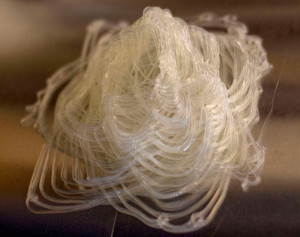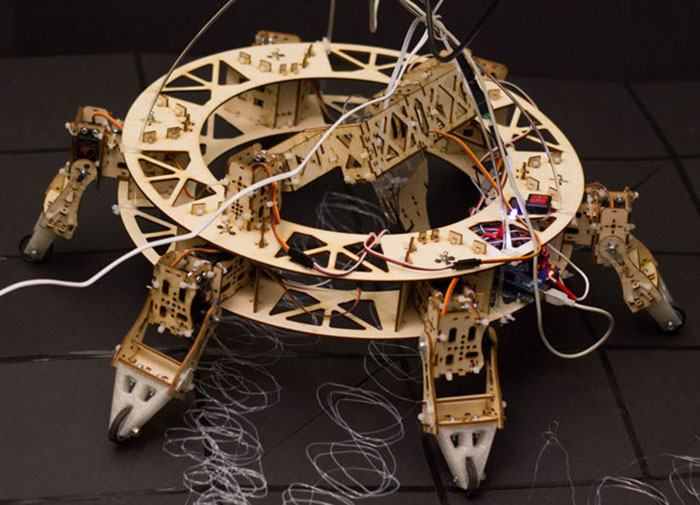Although Hollywood would have us believe that college is a place where people go to get drunk and get laid, Jia Wu, Mary Sek and Jeff Maeshiro at the California College of the Arts have proven that higher education can be a place where people go to develop some groundbreaking stuff. Through Professor Jason Kelly Johnson’s Future Cities Lab and assisted by Michael Shiloh, the students partook in a studio course called Creative Architecture Machines in which they designed and built the first walking 3D printer, the Geoweaver.
The Geoweaver is a walking, 3D printing hexapod, resembling something of a CNC’d bug that deposits glue wherever it goes. It looks a bit difficult to maneuver, but the students say on their Instructables page that Geoweaver is capable of walking “in a straight line, a curved line, rotate, dance,” and, most importantly, it can print while it moves. The design uses a glue-gun extruder based on a previous Instructables project to lay down wispy trails of glue. The Instrucable explains that, “The center mechanism uses two servos to control the pendulum-like extruder head, allowing it to cover a basic XY plane (though curved to the surface of a sphere, see video below), and one servo for the extrusion gear that forces the glue-sticks through the “print head.” All of this can be controlled through the software Rhino 5, with the plug-ins Grasshopper and Firefly.” See the little critter do its critter thing in the video:
The details for the entire project are listed on the Instructables page, but it’s definitely not for the inexperienced. If you do go about building your own Geoweaver, though, you might consider other extrusion methods, as I’m still trying to wrack my brain as to why they used a glue gun extruder instead of a traditional FFF type printhead as seen on your average Ultimaker or MakerBot, for example. It also appears that the shapes printed by the machine are currently constricted, perhaps due to the way that the extruder pendulates.

Source: Instructables



